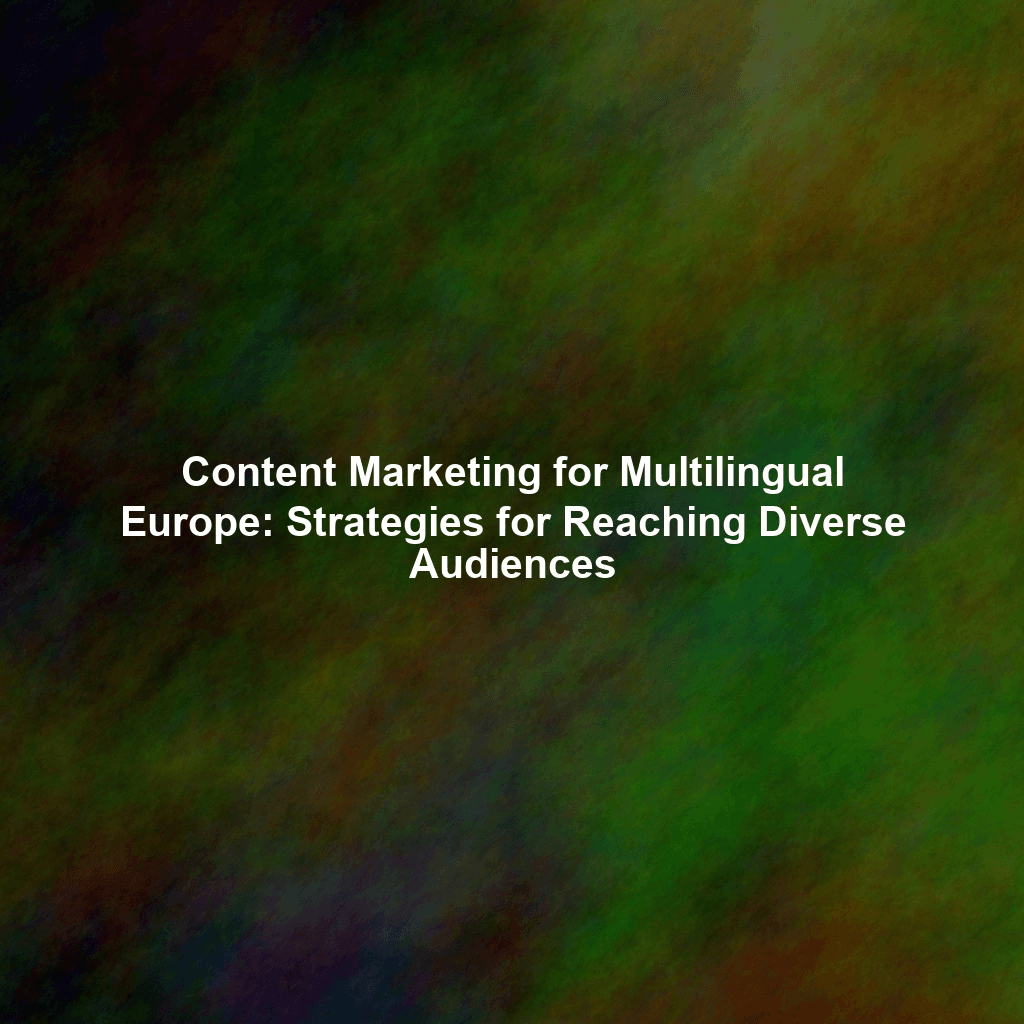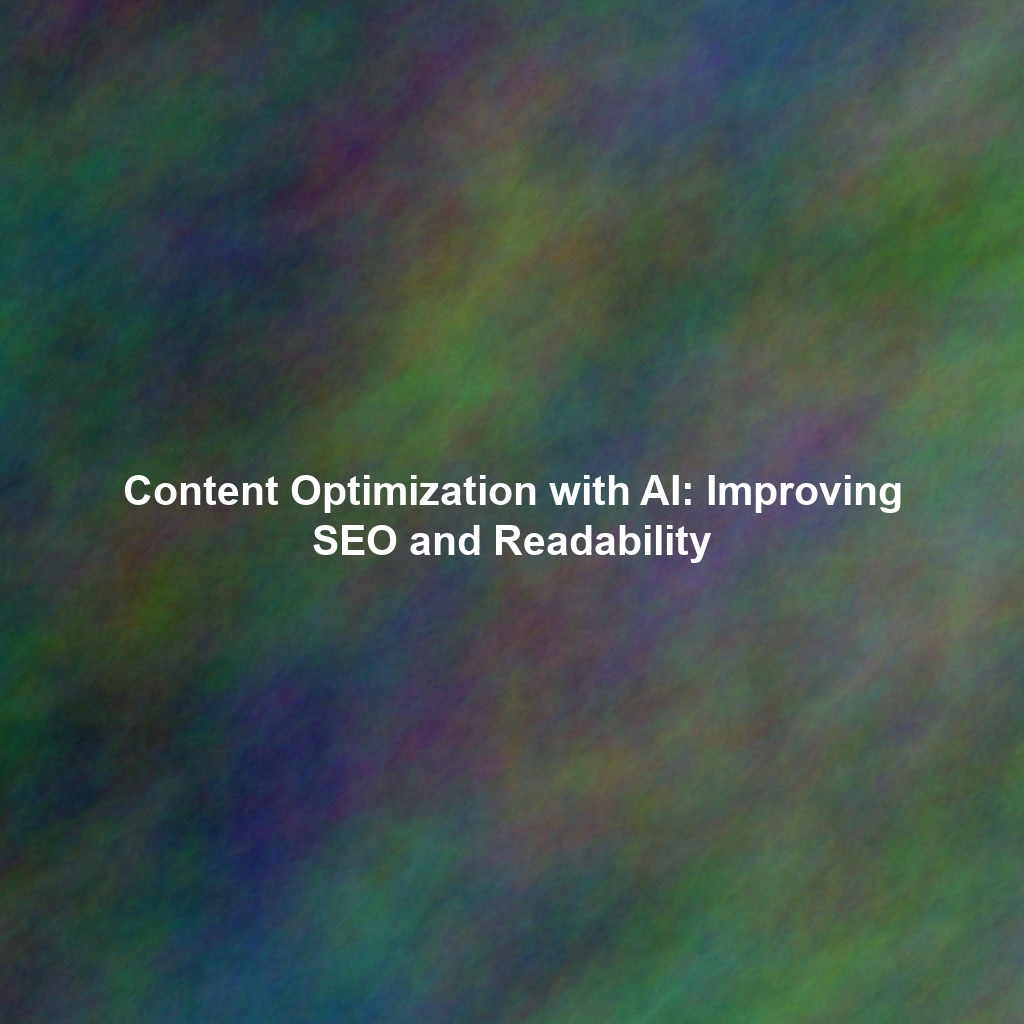The Evolving Landscape of European Content Consumption
Before diving into strategies, it’s crucial to understand the shifting landscape. In 2025, we see several key trends shaping content consumption in Europe:
- Increased Mobile Usage: Smartphones remain the primary device for accessing the internet across Europe. Content must be optimized for mobile viewing, with responsive design and fast loading speeds a necessity, not a luxury.
- Dominance of Visual Content: Video, infographics, and interactive content are gaining even more traction. Visual elements transcend language barriers and offer a more engaging experience.
- Rise of Personalized Experiences: Consumers expect brands to understand their preferences and deliver tailored content. Data-driven insights are essential for creating personalized experiences.
- Focus on Sustainability and Ethical Values: European consumers are increasingly conscious of sustainability and ethical business practices. Content that highlights your commitment to these values will resonate strongly.
- Growth of AI-Powered Translation Tools: While not a replacement for human translation, AI tools are becoming more sophisticated and can be valuable for initial drafts and content localization.
Crafting a Multilingual Content Strategy for 2025
A successful multilingual content strategy is built on a foundation of research, planning, and execution. Here’s a breakdown of key steps:
1. Target Audience Research and Segmentation
Understanding your target audience is paramount. Don’t treat “Europe” as a single entity. Conduct thorough research to identify your key target markets, their linguistic preferences, cultural values, and online behavior. Segment your audience based on language, region, interests, and demographics. Utilize social listening tools and market research reports to gather valuable insights.
2. Language Selection and Prioritization
Which languages are most important for your business? Prioritize languages based on market size, growth potential, and your existing customer base. Consider factors like purchasing power and brand awareness in each region. Start with a core set of languages and gradually expand as your resources and reach grow.
3. Content Creation and Adaptation: Beyond Translation
This is where the magic happens. Don’t just translate content; adapt it. Localization goes beyond simply converting words from one language to another. It involves tailoring content to resonate with the cultural nuances, idioms, and sensitivities of the target audience. This includes:
- Cultural Adaptation: Adjusting images, colors, and messaging to align with cultural norms and values. For example, colors have different meanings in different cultures.
- Idiom and Slang Translation: Replacing culturally specific idioms and slang with equivalent expressions that resonate with the target audience.
- Format Adaptation: Adjusting date and time formats, currency symbols, and measurement units to match local conventions.
- Keyword Research in Local Languages: Identifying the keywords that your target audience actually uses when searching for your products or services.
4. Leveraging AI and Human Expertise
AI-powered translation tools can be helpful for generating initial drafts and speeding up the translation process. However, human expertise is crucial for ensuring accuracy, cultural sensitivity, and a natural-sounding tone. Use AI tools to assist with translation, but always have a native speaker review and edit the content to ensure it resonates with the target audience. Consider using transcreation services for marketing materials where creative adaptation is crucial.
5. Distribution and Promotion in Local Channels
Don’t rely solely on your global channels. Identify the most popular social media platforms, online forums, and industry publications in each target market. Adapt your content for each channel and promote it using local influencers and partnerships. Optimize your website and content for local search engines to improve visibility.
6. Measurement and Optimization
Track the performance of your multilingual content and identify what’s working and what’s not. Monitor metrics such as website traffic, engagement, conversion rates, and social media shares. Use this data to refine your content strategy and optimize your content for better results. A/B test different versions of your content to see which resonates best with your target audience.
The Importance of Cultural Sensitivity in 2025
In an increasingly interconnected world, cultural sensitivity is more important than ever. Avoid stereotypes, cultural appropriation, and any content that could be offensive to your target audience. Invest in cultural training for your content creators and translators to ensure they understand the nuances of each culture. Consider working with local experts who can provide valuable insights and feedback.
Examples of Successful Multilingual Content Marketing
Several companies are already excelling in multilingual content marketing in Europe. For example:
- IKEA: Adapts its website, catalogs, and marketing materials for each European country, using local languages, imagery, and cultural references.
- Netflix: Offers a vast library of content in multiple languages, with subtitles and dubbing options. Personalizes recommendations based on user language preferences.
- Booking.com: Provides localized website experiences and customer support in multiple languages, making it easy for travelers to book accommodations around the world.
Conclusion: Embracing Diversity for Content Marketing Success
Content marketing in multilingual Europe in 2025 is not just about translation; it’s about understanding and embracing the diversity of European cultures. By investing in audience research, cultural adaptation, and localization, you can create content that resonates with your target audience, builds brand loyalty, and drives business growth. Embrace the challenge of multilingual content marketing, and you’ll unlock the vast potential of the European market. The future of content marketing in Europe belongs to those who can effectively connect with diverse audiences in their own language and on their own terms.
 Skip to content
Skip to content

